Laser Jewelry Repair Machine
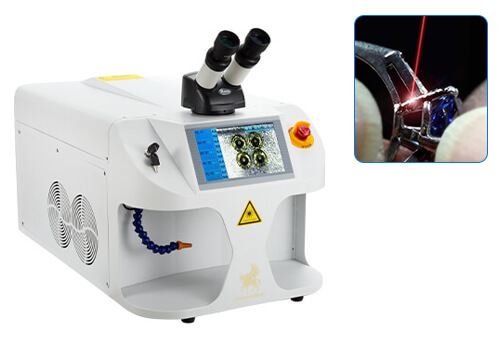
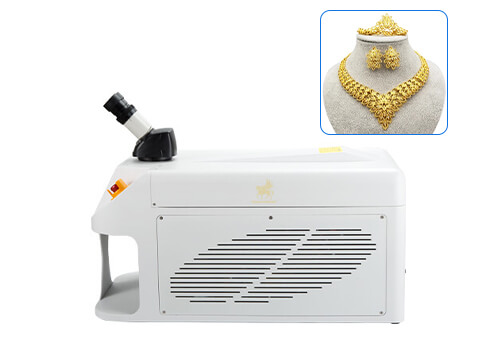
The mini laser jewelry repair machine is a compact size welding machine purposely designed for repairing or welding jewelries. This process is possible because the laser jewelry repair machine uses an amplified beam of light to produce a solid weld with an invisible spot in a few seconds.
The beam of light that is released by the laser jewelry repair machine is concentrated and can be easily controlled by the user with the inbuilt microscope and camera system.
The laser jewelry repair machine can be used to repair or weld base metals, karat gold, sterling silver, platinum, palladium, etc.
The laser jewelry repair machine is used across industries that like jewelry making, antique and pawn shops, electronic, medical, etc.
The welding process is faster and neater than any other form of jewelry repair. The heat used on every welded item causes no discolouration of the welded spot.
| Model | SPB-150WB |
| Wavelength | 1064nm |
| Max output power | 150W |
| Max pulse energy | 80J |
| Pump source | Single lamp |
| Pulse width | 0.1-20ms |
| Pulse frequency | ≤50Hz |
| Aiming and positioning | Microscope + camera system |
| Application | Welding and repairing various precious metal trinkets |
| Host power consumption | ≤5KW |
| Electricity demand | AC220V±5%/50Hz |
| Cooling system | Water cooling + air cooling |
| Dimension | 660x385x435mm |
| Weight | 49kg |
- The laser jewelry repair machine allows you to repair jewelry pieces and antique items without distortion or discolouration of the repair spot.
- The laser jewelry repair machine has a wavelength of 1064nm that gives the welded part a lasting effect.
- Superbmelt laser jewelry repair machine is capable of welding base metals, karat gold, sterling silver, platinum, palladium, etc. You are assured that your broken expensive metal can be repaired conveniently.
- The mini laser jewelry repair machine is compact size, this makes it easy to transport, use on any elevated surface in both small and large production or repair processes.
- The application of the laser jewelry repair machine is not limited to the jewelry making industry only, it is also applicable in industries such as electronics, dentures, aviation, aerospace, golf heads,medical equipment, etc.
- The inbuilt microscope and camera makes it easy for users to see and control the welding process.
- The ergonomics design of the laser jewelry repair machine makes it easy for users to weld for long hours without fatigue or irritation to the eyes that could arise from long stirring into the microscope, through the advanced shading system.
- The maximum power required for welding metals with the laser jewelry repair machine is about 150W, this means that the energy required to weld is minimal, thereby, saving cost on energy use.
- The laser jewelry repair machine is fast for welding, highly efficient welding process, large depth, no discoloration, high welding quality and non-polluting solder joints.
- The internal and external double circulation mode and air cooling unit prevents overheating of the laser jewelry repair machine. Through the quick circulation of cooling water and air, the laser jewelry repair machine can weld continuously for very long hours.
- The ceramic condenser cavity is corrosion resistant and resistant to high temperature. This condenser has a lifespan of 8 to 10 years.
- The laser jewelry repair machine allows you to make high strength welds. This means that there is no need for filler materials to be used during welding.
- The laser jewelry repair machine requires low heat(≤5KW), that reduces any means of distortion of welded items.

2 years warranty
The warranty for our machine is one year longer than the warranty provided by other factories.

Strong service team
We will give response within 24 hours against your problem by our professional engineer.
Why SuperbMelt Laser Jewelry Repair Machine



Any Question About SuperbMelt Laser Jewelry Repair Machine
Laser Jewelry Repair Machine Buying Guide
Do You Really Know How to Repair Jewelry
It’s common to find folks throwing away spoilt jewelry. A lot of individuals believe that worn-out jewelry cannot be repaired, and any attempt to do so would either be futile or unsatisfactory.
But with utmost sincerity and every authority, we say that’s a myth—there is no truth to such claims. Worn-out pieces of jewelry can be repaired, and surprisingly, you can do it yourself. All you need is the right tools and equipment.
In this buying guide, we would like to help you understand the dynamics of the laser jewelry repair machine, its essence in the precious metal, jewelry, and welding industry, and how it can serve beneficial purposes in the life of the everyday folk.
With that in mind, it’s important you note that the laser jewelry repair machine buying process is in no way complicated; you can easily walk into the warehouse of a preferred manufacturer or distributor and pick a machine of choice.
Nonetheless, laser welding machines are expensive, and we know that you wouldn’t like to make a hasty decision when such a hefty amount is at stake. So for this single purpose, the desire to help you make the right buying decision, we have detailed out all you need to know about the laser jewelry repair machine buying process.
1.1, Types of Jewelry Damage
Jewelry hazards exist year-round. From falling down drainpipes to flinging off with a winter glove, there are opportunities for a lost ring at every turn. And in scenarios where you recover your lost jewelry, you either find it looking damaged or worn-out.
Multiple factors can cause damage to your jewelry, from exposure to direct sunlight to chlorine in a hot tub or swimming pool. To be precise, in as far as your jewelry is in use, it’s prone to damage. Our goal in this buying guide is to help you safeguard your jewelry, keeping it free from rust, and at the same time, provide you with all the information you need if, for any reason, you find your jewelry in an unpleasant state.
Let’s take a look at a few probable causes of jewelry damage.
Exposure to chemicals: Exposure to chemicals can damage or discolor precious metals – gold, silver, and platinum – and may harm some colored gems. Even everyday substances like hairspray, lotion, perfume, or other cosmetics can contain chemicals that will permanently damage the surface of your pearls and other delicate or porous gems (like turquoise).
Fine jewelry should be removed before diving into a chlorinated swimming pool or before using household cleaners. Many of these cleaners contain ammonia, which can be too harsh for delicate gems or vintage jewelry. Chlorine bleach, another common household solvent, can pit or damage gold alloys.
Ultrasonic Cleaners: Ultrasonic cleaners should not be used to clean gemstones with surface-reaching breaks that have been filled with a substance such as oil, resin, or a glass-like material, organic gem materials such as pearls, coral, ivory, or amber, Gems that have been coated with a non-permanent substance like plastic or wax, some heat-treated gemstones and gems that are susceptible to heat and temperature changes whether they are treated or not.
Direct Sunlight: even with the darkest of shades and the most radiant sunglasses, we still find ourselves taking shelter when the sun is at its peak. What about your fine piece of jewelry, don’t you think it also desires such protection?
Just as the sun’s harmful rays can damage our skin, light and heat can affect a colored gemstone’s durability and color. Over time, and in excess, they can also fade or damage some gemstones, such as amethyst, kunzite, topaz, and shell cameos. Pearls and other delicate materials, such as ivory, will bleach under extreme exposure to light. Other gems, especially amber, can darken over time when exposed to too much light.
Whether it’s a small nose ring, wristwatch, or necklace, constant exposure to the sun can take away its glitters, leaving it dim and unprotected. The sun can bleach certain materials, especially natural elements and some plastics.
Dirt and Small Rocks: you might be wondering why we included this in our list. Certainly, you won’t go around playing with sand when you are putting on a fine piece of jewelry, and you definitely wouldn’t expose your gold ring to dust.
Yeah, we know you wouldn’t miss out on an opportunity to keep a priced jewelry clean and free of dirt, but then again, we sometimes allow our kids to put on fine pieces of jewelry we wouldn’t like to see go bad. Dirt and small rocks are abrasives. They can trigger jewelry damage in unprecedented ways.
1.2, The Usual Jewelry Repair Method
There are plenty of ways to store jewelry, but did you know that some of them are harmful? The best way to store jewelry depends on a few factors like the materials used, the type of jewelry, and how much the jewelry is worth.
In some cases, how you store jewelry is a personal choice. Do you prefer to see your jewelry on display or have it out of sight? Do you take your jewelry off in your bathroom or the bedroom? Regardless of your preferences, there are numerous tips you should consider to protect your jewelry.
In this section, our focus is on the conventional jewelry repair method most jewelers settle for when looking to brighten or redesign worn-out jewelry. While these methods are not as formidable as the ones contained in chapter 2, they can serve as a quick fix in situations where you need to get a fine piece of jewelry ready for an impromptu event.
Sizing of The Ring
It is effortless for a jeweler to tight the ring than making it lose. Generally, the jeweler cuts out a small portion of the band and adjusts according to the size by replacing the pieces together. There are two methods of ring enlargement, and those are the stretching method and the soldering of the additional piece to the existing band.
Replacing or Re-Tipping Ring Prong
When the part of the prong is still intact, it requires re-tipping. This method requires the jeweler to add a tiny bit of metal bead or wire to the top to strengthen the hold. The entire replacement process is similar to re-tipping; the only difference is that the jeweler requires long pieces of wire or metal bead to create a new prong.
Ring Head/Setting Replacement
Ring head can become weak or may even get bent or damaged due to rough or regular use. The jeweler first ascertains the need to replace the head; if he feels that the removal of the head is necessary, then only he suggests doing so. The existing head is heated and cut off with the saw and torch, and a new crown is placed in its place to replace the head.
Chain Repair
Light and delicate chains are prone to break or get damaged because the strings used to attach the chains are too tiny and thin. Over time with the daily use of the chain, it can break, and quick jewelry cleaning services can repair it by attaching a similar string to it or joining the existing two series and then soldering it.
Clasp Replacement
The clasp replacement of a broken necklace is straightforward to repair. With the help of the pliers, the strings are pulled apart, and a new clasp is attached, removing the old one.
Stone Replacement
Many people get bored of wearing the same stone; it is also possible that they may want to replace the rock as it has become dull or chipped or cracked over time. Stone replacement involves replacing the existing stone with a new one.
Cleaning and Polishing
It is the most common repair type where customers bring in their precious jewelry to either clean or polish, and this is a type of same-day jewelry repair service in Amherst, NY. Metals like gold and silver tend to get dull with time. It is not that frequent, but in a decade, it surely does. To regain the original shine of the jewelry, people opt to polish it. Also, cleaning of fine jewelry is recommended to be done only by professionals as they are the best to perform cleaning considering the jewelry type.
Pearl Restringing
Pearl necklaces are gorgeous and are attached to their string very tightly. But continuous use may loosen the line and lead to breakage of the chain. It may make the pearl come out of the chain. And hence to restring it again, jewelers have correct tools.
Tools on the Market for Repairing Jewelry
At this point, we believe you are familiar with the types of jewelry damage your fine wristwatches and bracelets are prone to and the conventional jewelry repair methods most jewelers undertake to make your jewelry fit for use again. If that’s the case, it’s high time we talked about the tools available for jewelry repair.
The jewelry industry is amongst the biggest there is. Almost every individual on this planet has a fine piece of jewelry attributed to his/her name. Keeping up with a production line that serves over 6 billion people requires tools and equipment that doesn’t just streamline a seamless work experience but also leaves room for repairs in situations where damage occurs.
In this section, we are going to analyze the many tools available to jewelry repair, draw a comparative table and recommend tools for sustainable jewelry repair solutions based on our findings.
2.1, Jewelry Spot Welding Machine
This welding machine is used to join the overlap steel sheets. Each sheet is 3mm thick. The metal sheets can be protected by a pair of electrodes by passing the current through the sheets.
Spot welding is a process in which contacting metal surfaces are joined by the heat obtained from resistance to electric current flow. Workpieces are held together under pressure exerted by electrodes. The process uses two shaped copper alloy electrodes to concentrate welding current into a small “spot” and to simultaneously clamp the sheets together.
A spot welding machine normally consists of tools and electrodes, which are mechanisms for making and holding contact at the weld. Tool holders have two functions: to hold the electrode firmly in place and to support water hoses that provide cooling of the electrodes.
The advantages of the spot jewelry welding machine are effective power utilization, high manufacture rates, simple automation, etc. As it consists of many spot welds, it is widely used in the jewelry and motor vehicle industry. It costs cheaper than others.
2.2, Propane Flame Welding Machine
Propane flame welding equipment, also known as oxy-fuel or oxyacetylene welding equipment, uses oxygen and fuel gases to cut workpieces or join them together. Propane flame welding doesn’t require electricity, unlike arc welding, and can be used to cut or weld a wide variety of metals.
The oxygen and fuel gas mixture is ignited to create a high-heat flame at the tip of a gas welding or cutting torch, and the heat from the flame welds or cuts the material. Propane welding equipment rods provide filler material for creating secure joints between two surfaces in gas welding tasks.
Gas cylinders hold the gases used in the welding or cutting application, and gas regulators control the gas pressure and flow of the gases to the torch.
Accessories such as gas mixers and hose reels enhance or maintain the performance of the welding equipment. Propane flame welders are commonly used for welding or cutting heavy metal workpieces such as aircraft, automobiles, pipes, precious metals, jewelry, and building materials.
2.3, Jewelry Laser Welding Machine
Using lasers to weld jewelry is a relatively new way to do welding. While the concept is still the same – using heat to join two materials together – the way in which heat is delivered by lasers is quite unique. Although laser welding has been around for several decades, the use of this technology in the jewelry industry has only been picked up recently because of the transition to automated manufacturing processes.
Simply put, jewelry laser welding is a process in which lasers are used to melt the material on the surface of a workpiece, allowing it to be joined to another workpiece made of the same material. Laser welding is typically done for either metals or thermoplastics. Different types of lasers have also been used for welding, with older applications using solid-state (like Nd: YAG) or gas lasers (like CO2 lasers) are widely used nowadays.
A laser is merely a highly concentrated beam of light that delivers a vast amount of power. The high-power density of jewelry laser welding machines allows them to melt the material of the workpiece in a controlled manner. By subjecting the material to a high-powered laser beam, the molecules in its surface gain enough energy to get excited and gain more fluid-like properties.
When excited molecules of the same material come into contact and concurrently move to lower excitation states, they revert to being solids and develop a bond at the molecular level.
Jewelry laser welding (as with other laser-based technologies) remained almost exclusively used in laboratories and research institutes until sometime in the late 1990s. During this time, the concept of additive manufacturing – particularly 3D printing – was starting to gain popularity.
Although the technology for 3D printing using plastic resins or filaments had already been developed, there were not many viable ways for an equivalent process to be applied to metals. Along came jewelry laser welding, allowing for the rapid and highly automated joining of powdered metal as raw material. The popularity of 3D printing also gave a boost to laser welding, giving this previously experiment technology a niche in the modern manufacturing world.
2.4, Comparison: Why Laser Welding Machine is the Best Choice
In looking at the benefits and drawbacks of jewelry laser welding technology, it’s more worthwhile to compare it to traditional welding techniques – those that use a propane flame or a jewelry spot welding machine. After all, these classic welding techniques are still the most commonly practiced and are likely the entities that laser welding will be put up against.
However, jewelry laser welders come with multiple advantages propane flame welding machines, and the jewelry spot welding machine can hardly boast of.
The number one thing that makes the transition to jewelry laser welding worth it is that it fits right in with an automated manufacturing process. Although jewelry laser welding gained popularity in 3D printing, it has now also become useful for automated versions of more traditional welding applications.
Automating the welding process provides a multitude of benefits for the manufacturer. It reduces the need for manual operations, resulting in jewelry with better precision and more consistent quality. Automated systems are also a lot faster than having human welders do the work, which is crucial for high-volume industries.
In traditional welding using a propane flame or electrical arc, changing over from one material to another involves changing the flame temperature of the intensity of the electrical arc. Jewelry laser welders work much in the same way in that their intensities can be adjusted to make them suitable for different materials. The main benefit of the mini lasers welding machine in this context is that they can have pre-set parameters for different materials, making changeovers a lot smoother.
The high-power density of jewelry laser welders makes them capable of welding materials that would have been challenging for other welding techniques. The list of materials that can be welded with lasers is long and includes super strong metals like titanium and carbon steel. In terms of sheer power density, the only technology that can complete with laser welding is electron beam welding.
Jewelry laser welding machines are typically fully automated and have enclosed working spaces. This means that personnel no longer need to be exposed to the high temperature and particulates generated during welding. Even on this merit alone, a jewelry laser welding machine is already a worthwhile investment. Any technology that enhances workplace safety and keeps personnel away from unnecessary hazards should be worth considering.
Why do You Need a Laser Welder to Weld Your Jewelry
3.1, Advantages of Laser Welding Method for Jewelry Compared with Other Methods
Since you now know why every jeweler needs a laser welding machine for regular workflow, let’s look at some of the advantages it’s bringing to the jewelry industry.
Ultimate Precision
One of the main benefits of a portable laser welding machine is that it offers a high level of accuracy and control. The fact Laser technology is so precise means that it can be used to weld the smallest of parts together without causing any damage to them.
Capable of creating complicated joins
Jewelry laser welders are capable of handling complicated joins. Using Laser welding technology, you can weld dissimilar materials, as well as areas that would be too difficult to reach using more traditional welding techniques.
Low Heat Application
The fact that jewelry Laser welding machines use a low heat application minimizes the distortion of the components. This is why it is the preferred method of welding for those creating luxury products, such as bespoke jewelry. Lasers use very localized energy, allowing for contact-free application, which results in less thermal strain being placed on the parts.
Consistent and Repeatable Welds
Jewelry manufacturers choose Lasers as their number one choice of welding method as it allows for consistent and repeatable welds to be made. It is a much faster welding technique than other more traditional techniques and is also much more versatile.
The same Laser welding machine can be used for cutting and drilling, too (Pulsed Fiber Lasers can also be used for marking). The fact that Lasers allow for excellent repeatability and are so versatile helps businesses make significant unit cost reductions.
High Strength Welds
Jewelry laser technology allows manufacturers to make high-strength welds. There is no need for a filler material to be used. Lasers provide excellent weld quality and clean processing, which is why they are favored by manufacturers, particularly in the medical industry, where the safety of medical devices and parts is paramount.
3.2, How to Process the Laser Welded Jewelry?
When laser welding, precious metals don’t play nice. This metal is going to fight you every step of the way, so you have to know how to fight back. Most jewelry’s reflectivity and surface tension make it more challenging to laser weld than, but there are tricks you can use to tame the beast.
Mask its reflectivity. Jewelry laser welding precious metals is similar to hitting a mirror with light. Do not polish it before welding; leave the piece tarnished. Rough up the area that’s to be welded by sandblasting, using an emery board, or use fine-grit sandpaper. Or you can mark the area with a Sharpie to allow the energy to go into the metal.”
While laser welding jewelry, if you find that you are having success in some areas of a piece but not others, try wiping your finger across the weld zone. The oil and dirt from your finger will cut down on the reflective nature of the precious metal.
Use the right settings. The only way to break through precious metals surface tension is by using optimal settings on your laser welder. The machine must be capable of 6 or higher kilowatts of peak pulse power for silver. And it generally takes longer to weld silver than gold or platinum. Use 1.5 to 2 hertz and keeping the heat on the piece while you are working. Avoid stopping and starting because the piece will lose heat, which is necessary for metal flow.
But take extra care when welding a silver piece with gemstones due to the metal’s need for a lot of heat. If the piece has stones in it and becomes hot in your fingers, you need to take a break, let it cool, and then come back to it to protect the stones from excessive heat.
Choose welding wire wisely. Use a sterling silver welding wire with 5 percent platinum content when laser welding silver. This wire welds beautifully, and the weld holds nicely and doesn’t have porosity.
Consider the workpiece. Because every job has different requirements, choose your laser welding approach based on the workpiece. For example, with a repair, you may want to take a few low-power test shots on the joints before starting work. Older jewelry and their solders can be of different alloys with a lower melt temperature, and the standard-setting could blow a hole right through it, maybe destroying a stone beneath it or splatter back and make a mess.
When working on a thin piece of silver, such as a box chain, the roundness of the wire will take more heat than the flat sterling on the box chain, and the chain will melt before the welding wire—flattening the welding wire-thin, so it has the same melt temperature as the chain.
3.3, With Laser Welding, You Don’t Need to Spend Extra Time Preparing for Work in Advance
Compared with the traditional diamond powder grinding and ion beam scribing method, the jewelry laser engraving speed is fast. The characters and graphics edited by the software can be directly engraved, which has few impacts on the gloss purity of the diamond, good engraving quality, easy operation.
Jewelry laser welding machines are also ideal for permanent wear-resistant markings on precious and delicate jewelry surfaces such as rings and necklaces with a personalized message, greetings, and personalized patterns. Besides, the laser can engrave a variety of materials such as copper, stainless steel, silver, gold, gold, platinum, platinum, and titanium.
Jewelry laser welding is a non-contact heat transfer technique in which laser radiation heats the workpiece’s surface and diffuses internally through heat conduction.
The workpiece can be melted by controlling parameters such as the width, energy, peak power, and repetition frequency of the laser pulse to form a specific molten pool.
Laser jewelry repair machines are widely used in gold and silver jewelry processing and other mall parts welding, including gold and silver jewelry fill holes and spot welding sand. The fiber laser cutter is suitable for gold, silver, stainless steel plate cutting.
Matters Needing Attention in the Purchase of Laser Welding Machine
When looking to purchase a laser jewelry repair machine, there are a few areas you need to pay special attention to. In this section, we will highlight some of the basic matters you need to give attention to when purchasing a laser jewelry repair machine.
- Assess the Nature of the Metal
Usually, welding is done only on carbon steel. Carbon steel has the ability to handle the excess heat that any novice welder might accidentally apply to the metal. It is, thus, compatible with a majority of the laser welding machines available for use. Stainless steel is well suited for storing beverage or edible items because of its ability to resist corrosion.
It is a fully compatible laser welding machine and does not require as much amperage to operate as does carbon steel when being welded. Aluminum needs an almost uniform supply of heat to keep the weld pool from drying out owing to its high heat-conductive capacity. However, the high input of heat often results in the deformation of the workpiece.
Thus, aluminum requires more complex laser welding machines, equipped with the ability to perform pulse welding in order to be conjoined optimally well. A better choice for welding aluminum would a high-end laser jewelry repair machine. It would be, thus, best that you assess the metal that you wish to conjoin before selecting a welding machine.
- Establish the Ideal Amperage
The cost of a laser jewelry repair machine is dependent on the current it can generate; thicker metals usually require more current in order for them to be welded properly. It is thus best that you pay ample attention to the thickness of the fixtures as well as the base metals you’d be required to work with for a project.
Like thick structural steel and a pipe having a thickness greater than half an inch, you would require either a portable laser welding machine or a mini welding machine to weld these effectively.
To weld thin metals, on the contrary, you would require more sensitive laser jewelry repair machines, which would provide just the right amount of heat to form the weld. In this respect, welding aluminum becomes almost the same as does welding a relatively thinner metal.
- Choose an Ideal site for Welding.
The site where you’d be performing the welding also helps in arriving at a suitable welding machine. When welding indoors, you could plug in your laser jewelry repair machine to a 115 volt AC machine, a 220-240 volts AC supply. A 115 volt supply is the regular supply that any commercial or domestic facility receives. Most elementary welding machines operate at this voltage. The machine could work in single-phase or work as a three-phase device.
- Refer to the Specs Sheet
Referring to the specs sheet can help you understand several things critical to differentiating a good laser jewelry repair machine from another. For instance, a specs sheet can help you gauge how much continuous welding a machine can perform in a span of ten minutes. The duty cycle is representative of the number of minutes that you can weld per a standard interval of ten minutes. Exceeding the duty cycle may heat up the machine, damaging its internal circuitry.
4.1, What Kind of Jewelry Laser Welding Machine is Suitable for Your Need
Knowing what you know now, you wouldn’t need to second guess yourself when trying to pick a laser jewelry repair machine for your production line. Jewelry laser welding machines are capable of welding tasks beyond the capability of traditional welding methods. Propane flame and jewelry spot welding machines have long been recognized as good choices for welding small components because of their excellent finish.
However, such traditional welding methods require skill and dexterity, and despite their controllability, they may suffer from several disadvantages. Jewelry laser welding machines are an excellent substitute that frequently outperforms propane flame, and its tightly focused beam limits heating effects.
The heat required for welding is supplied by a tightly focused light beam with a diameter as small as two-thousandths of an inch. Welding is conducted by firing a series of short pulses that melt the metal to create a high-quality weld.
Depending upon the particular welding task, the filler material may be required as with propane flame welding. Because the laser beam is tightly focused, heat input is minimized, and parts can be handled almost immediately.
4.2, What Parameters are Core to Laser Welding?
To enjoy the superior and authentic welding experience jewelry laser welders bring to the welding process, you will need to consider several parameters before finalizing your purchase. Knowing the parameters to consider will help you pinpoint the right mini laser welder for your production line. Some of the parameters you need to thoroughly consider include;
Frequency of Laser Pulses – The frequency of the laser pulse is mainly the ability to reflect how many pulses can be produced in a second. The unit for it is Hertz (Hz). The welding metal is the energy using the laser in the case of metal welding. The higher the frequency, the smaller the output of every laser jewelry repair machine, in the case of constant laser power. Hence, we need to ensure that the laser energy is enough to melt the metal, and the speed of the processing can be considered to determine the output frequency of the laser.
Laser Pulse Waveform – This is an important problem to check in a laser jewelry welding machine, especially for wafer welding. When the high-intensity beam is projected onto the surface of the material, the surface of the metal will be reflected and lost by approximately 60-98% laser energy, and the reflectivity will change with the surface temperature. The metal reflectivity changes greatly during a laser pulse.
Power Density – An important parameter in the laser welding of a laser welder. With high power density, the surface layer can be heated to boiling point in the microsecond time range, resulting in a large amount of vaporization. Hence, high power density is beneficial to material removals such as cutting, punching, and carving. Whereas, for low power density, the surface temperature reaches a boiling point for several milliseconds. Before the surface vaporization, the bottom layer reaches the melting point and easy to form a good fusion welding. Therefore, the power density is in the range of 104-106W/cm2 in conduction laser welding.
Laser Pulse Width – Another important parameter is the pulse laser welding machine. It’s not only a vital parameter that is different from material removal and material melting but also the main parameter to determine the volume and cost of processing equipment.
FAQ of Laser Jewelry Repair Machine
What material can be laser welded?
Laser welding can be carried out between a variety of dissimilar metals. Studies have shown that it is applied to copper-nickel, nickel-titanium, copper-titanium, titanium-molybdenum, brass-copper, Carbon steel-copper, and other dissimilar metals that can be laser welded under certain conditions.
Does welding weaken material?
Welding can weaken steel, particularly in the heat-affected zone (or HAZ), when welding at high temperatures. Weakening with welding is most common with cold-rolled steel.
Do I need other metals to repair jewelry?
Nope, you don’t need other metals to repair jewelry with a laser.
Where is the laser welding machine used?
Laser welding has a diverse range of applications in various industries. The most common application of laser welding is to join pieces of thermoplastics and metals. It is also widely being used in various industrial applications owing to its high accuracy, low distortion, and high speed. Recently, laser welding machines have become popular in the jewelry industry to design and shape unique jewelry pieces as per the requirement of the customers. It even finds use in other industries such as aerospace, automobile, electronic, medical, and engineering.
Can I laser weld machine aluminum?
Yes, you can laser weld aluminum. Laser beam welding is one of our most popular services for welding aluminum. The process is ideal for fast, clean welds. The heat-affected zone is minimized, and weld penetration can range up to 0.25.
What is the principle of laser beam welding?
Laser beam welding refers to the fusion joining process that involves the production of coalescence of materials through the heat obtained from a concentrated coherent beam of light. The laser beam has high energy content and low beam divergence that helps in the creation of heat when striking the surface.
What material can be laser welded?
Studies have shown that materials like copper-nickel, nickel-titanium, copper-titanium, titanium-molybdenum, brass-copper, Carbon steel-copper, and other dissimilar metals can be laser welded under certain conditions.
Which types of laser can be used in jewelry repair?
Lasers for welding are the most suitable for jewelry repair.
Can you weld a mini machine with a laser?
Yes, you can. Laser Beam Welding, also known as LBW, can be used to mini weld machines. It is used to join tiny and large pieces of metal together. A mini laser welding machine can also be used to join thermoplastics. The beam ensures a concentrated source of heat hence allowing for deep, narrow welds and very high welding rates. The mini laser welding machine is based on penetration or keyhole mode welding. You can use a laser to mini weld a machine as long as you are familiar with its operational sequence.
Does welding consume precious metals?
No, welding does not consume precious metals. The only time welding can reduce your output is if the right setting is not maintained. But with the right settings and adjustment maintained throughout the welding process, your output would be directly proportional to the amount of precious metal welded.
How strong is the jewelry repaired by laser welding?
A good laser weld is three times as strong as the virgin metal or 260 times stronger than a solder joint. To learn more about laser welding jewelry, please contact us today.
What is the principle of a laser welding machine?
Laser welding uses a focused laser beam as an energy source to bombard the heat generated by the workpiece for welding. The laser beam has high energy density, the heating process is extremely short, the welding point is small, the heat-affected zone is narrow, the welding deformation is small, and the dimensional weldment accuracy is high. It is possible to weld materials that are difficult to weld by conventional welding methods, such as welding refractory metals such as tungsten, molybdenum, niobium, and zirconium. It is possible to weld non-ferrous metals in the air without the need for additional protective gas; Laser welding equipment is more complicated and costly. Laser welding can weld low-alloy high-strength steel, stainless steel and copper, nickel, titanium alloy, etc.; dissimilar metals and non-metallic materials (such as ceramics, plexiglass, etc.); currently used in electronic instrumentation, aviation, aerospace, nuclear reactors, etc.
Can you solder jewelry with a laser?
Yes, you can solder a piece of fine jewelry with a laser.
Conclusion
With all the information contained in this piece, we believe you have all you need to make the right laser jewelry repair machine buying decision. And at this junction, we would like to draw the curtains.
SuperbMelt is an electro-machinery company dealing in the manufacturing and distribution of laser jewelry repair machines. Scoring our catalog would grant you instant access to laser welding machines of all kinds with varying price ranges.
All our machines are optimized to provide users with the smooth and efficient finish they desire, and this claim is backed up by a one-year warranty. So, if you are still skeptical about the type of laser jewelry repair machine to buy, need a specialist to proffer sustainable solutions based on your budget, or need to understand the efficacy of a jewelry repair machine better, we recommend you put a call through today.

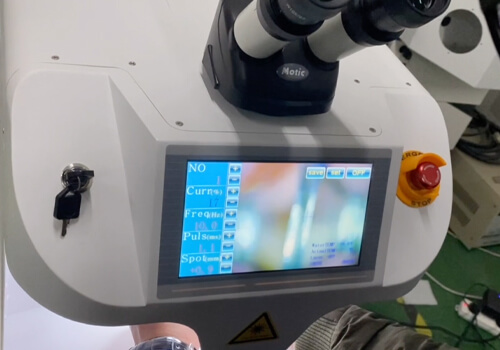
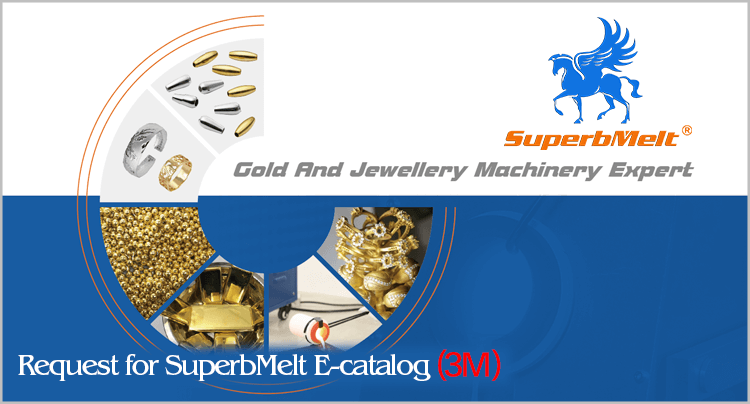
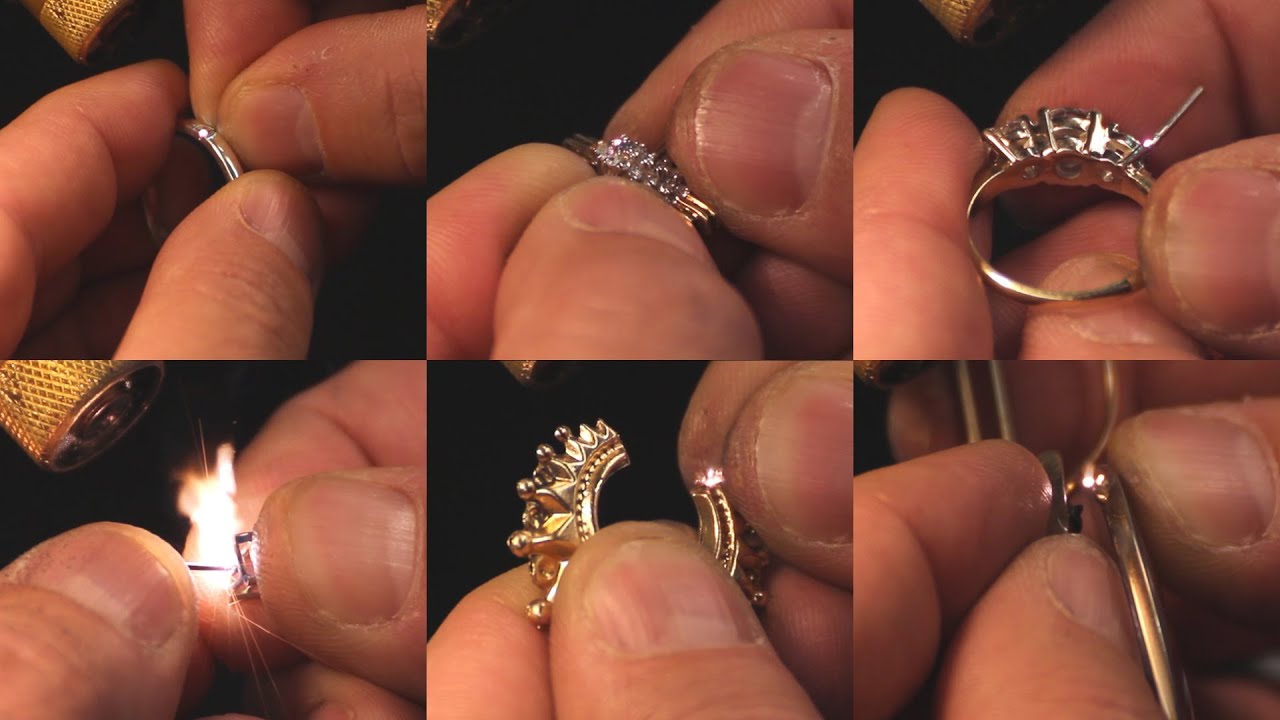
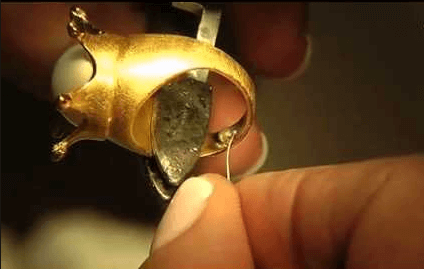
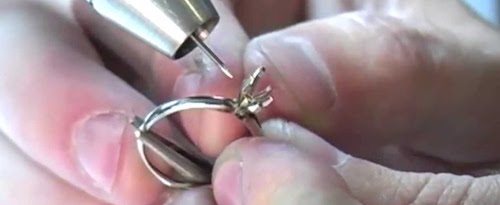
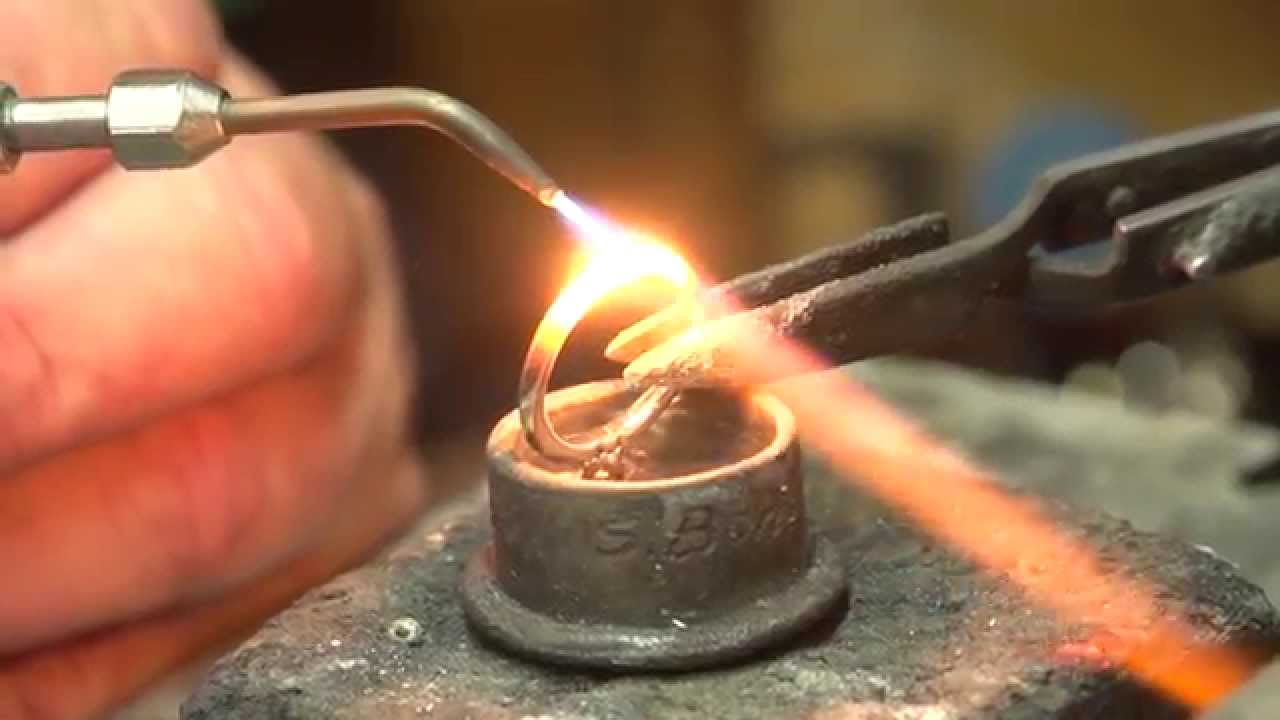
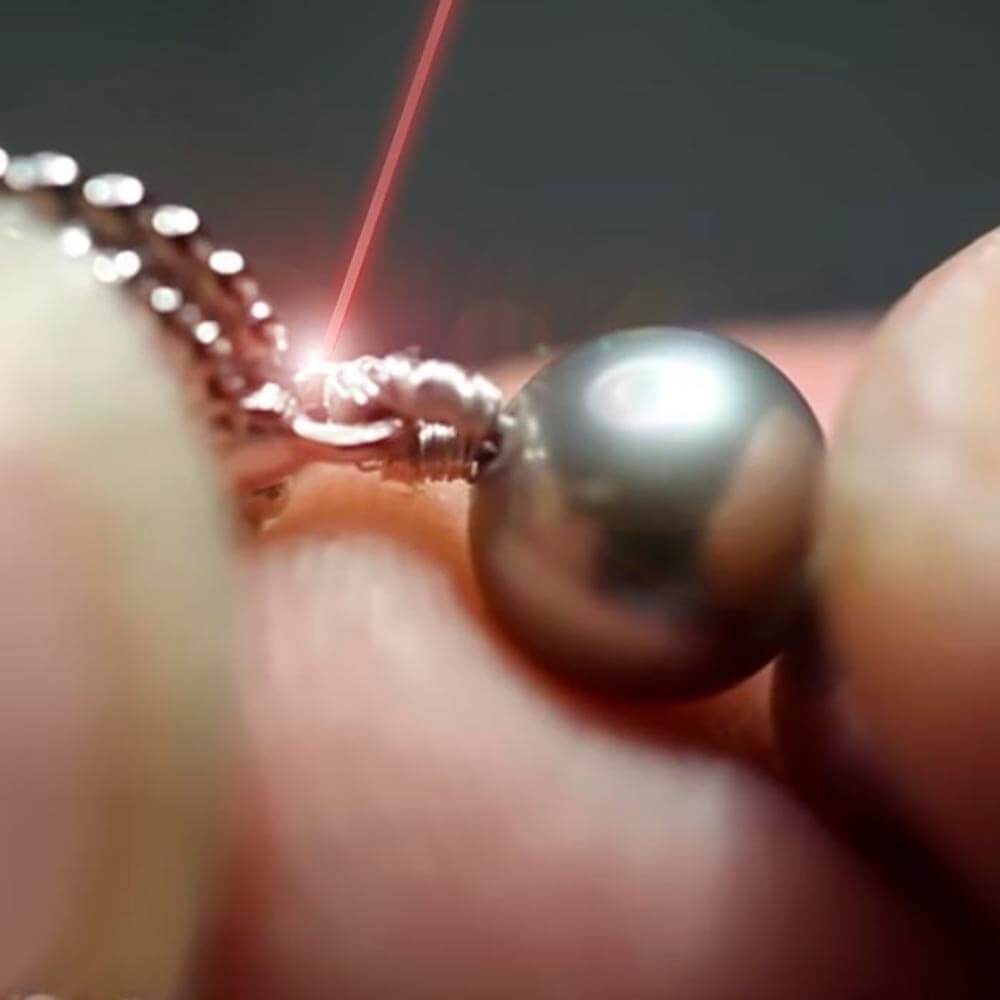
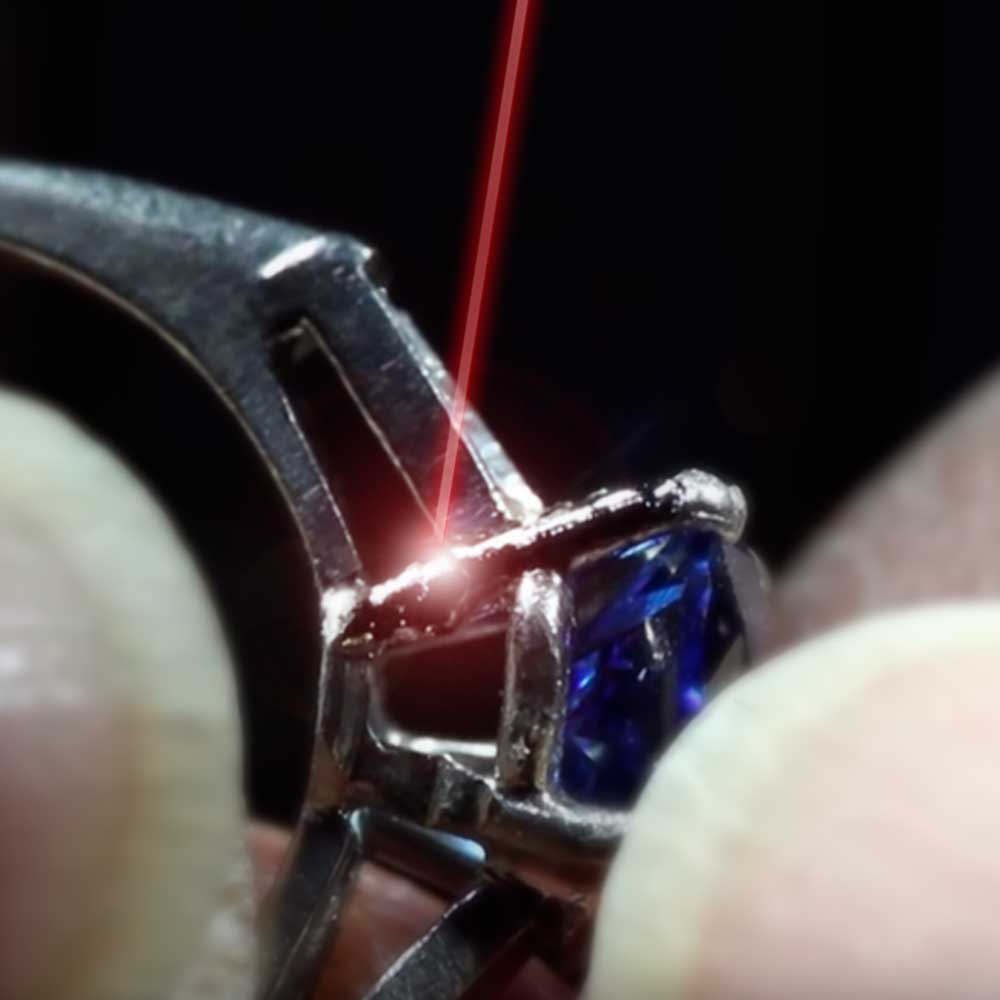
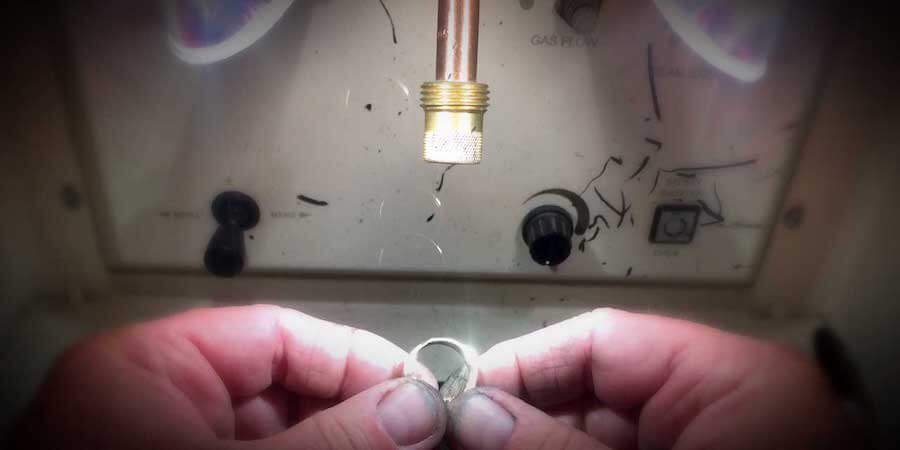
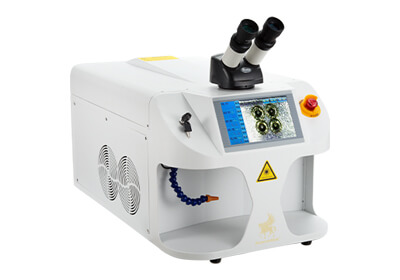
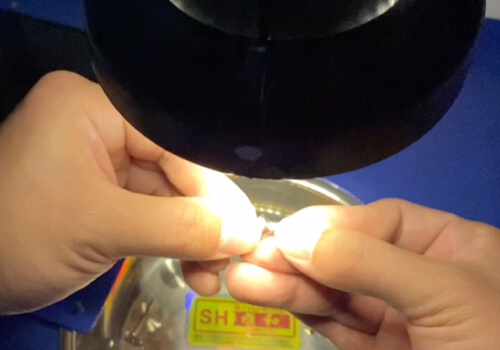
 © Copyright 2008-2021 Superb Electromachinery Co., Limited
© Copyright 2008-2021 Superb Electromachinery Co., Limited